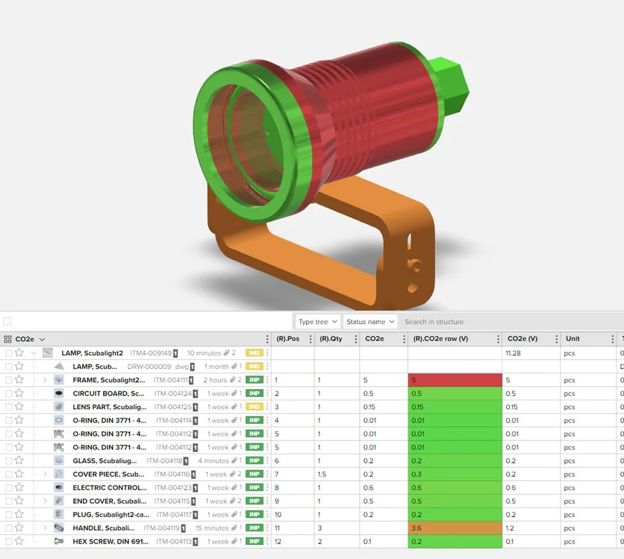1. CRUD: Efficient data management
CRUD comes from the words Create, Read, Update and Delete and forms the basis for data management in manufacturing. The ability to manage CAD model data effectively, regardless of the CAD software used, is critical to ensuring consistency and accessibility across your organization.
Unified data entry: Entering relevant data once in the system should be enough for it to be accessible across the whole organization.
Linking data: Data should be linked, ensuring that different types of data such as models, metadata and documents are all interconnected and updates are automatically reflected everywhere. This makes sure that everyone in the organization has access to correct and up-to-date information.
Centralized data that is automatically updated will minimize redundant tasks and reduce the risk of errors.
2. Searching: Streamline information retrieval
The vast amount of information requires solid search capabilities. Efficient searching allows you to quickly find the relevant information you need without looking through unnecessary data.
Searching should be made as simple as possible. You should be able to search in many different ways and filter the results to narrow them down and get to the data that you want. Utilize visual search tools and filters to make the search as user-friendly as possible. Robust search capabilities save time and reduce user frustration.
3. Organizing and grouping: Structure your data
Finding information is just the first step. You also need to organize your data effectively so it can be reused, added to and shared to others. Proper data organization is crucial for maintaining a streamlined workflow.
Group your data to ensure you will find it also later and it is easier to use. Use, for example, sub-headings, structures, tags and projects to group and organize your information systematically. Save searches for future use and share them with other team members to ensure consistency across the organization.
Organizing your product data efficiently not only makes it easier to find and reuse information but also enhances collaboration and consistency across teams. Well-structured data ultimately drives productivity and supports better decision-making.
4. Visualizing: Better data usability
Visualizing tools can make complex data more intuitive and easier to understand which helps in making informed decisions. Visualizing your data is one way to get the most out of it. Make sure you can use different methods to visualize your information, for example attachments, revisions, visual graphics, colors and comments.
You should be able to view your drawings and models directly on your screen in the PLM system without needing to open the CAD software or print them out. Zoom in to the model and take a closer look at the part, see information that is attached to it or add different colors to the parts, for example, according to the Co2 value.
Visualizing your data makes complex information more accessible and improves the ability to analyze it and act on insights quickly. It also ensures that users, who are not that familiar with CAD tools or data management systems, can easily understand and work with the information.

5. Controlling: Manage data access
Data on its own is not good without control. How do you control your product information and make it available to the right people looking at the right data at the right time while preventing unauthorized changes? Make sure you can differentiate between administrative and user access rights to safeguard your data. The user interface should be simplified for different roles to minimize errors and streamline data access.
Conclusion
As a manufacturer, product data is your most important asset. Effective data management – from creating, reading, updating and deleting data to visualization and access control – is key to overcoming common challenges and driving operational efficiency. Address these five common data challenges and you can reduce errors, improve productivity, accelerate time to market and strengthen seamless collaboration across teams.
Learn more about benefits of PLM
Do you want to learn more about Sovelia Core PLM solution and how it can help you manage your product data effectively throughout the whole product lifecycle?
Watch this webinar recording: Streamlined product lifecycle management with Sovelia Core



